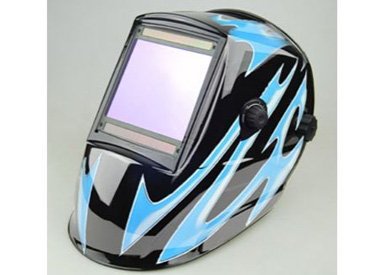Metal Inert Gas, or MIG welding, is generally the easiest welding method to learn and use. Even so, it is not foolproof and trouble may occur if the operator is inexperienced with their equipment, technique, and maintenance. Here, we address some frequently asked questions from our customers. Find the answers to your MIG welding questions here.
Q: What do I need to start MIG welding?
A: At a minimum, you’ll need a machine, filler wire, shielding gas, a regulator with hose, a torch, consumables, a work lead, a source of appropriate power for the machine, and personal protective equipment (PPE) such as a welding helmet and gloves.
For more information about the best welding helmet for sales, welcome to contact us today or request a quote.

Welding Helmet
Q: What materials can I MIG weld?
A: You can MIG weld carbon steel, stainless steel, and aluminum with the proper equipment, shielding gas, and filler wire
Q: When should I change my contact tip?
A: If you experience a burnback that fuses the filler wire to the tip, if the tip develops a “keyhole” shape in the front, if it becomes bent or deformed, or if excessive spatter accumulates.
Q: What shielding gas should I use for MIG welding?
A: The most common shielding gas for MIG welding is 75/25, which is 75% Argon and 25% Co2. Other various mixtures of Argon and Co2 are often used as well as straight Co2 and occasionally Helium.
Q: Do I have to use shielding gas?
A: No. If you do not have shielding gas or your machine is not equipped with a gas solenoid, you may use flux core wire, which is self-shielded. This process is called FCAW, or Flux-Cored Arc Welding.
.jpg)
Flux Cored Wire Self-shielded
Q: Should I push or pull my weld?
A: There is a lot of debate on this, however, it is generally recommended to push your weld where possible unless you are using flux core or dual shield wire or where more penetration is needed.
Q: What Is stick out?
A: Stickout, also called contact tip to work distance (CTWD), is the distance the wire must travel between the leading edge of the contact tip and the workpiece. A longer stickout increases amperage. A shorter stickout reduces it.
Q: Should I use a protruding (stick out), flush, or recessed nozzle?
A: This is largely a user preference decision and will vary depending on the amount of spatter generated by your process, but as a general rule you should transition from a protruding nozzle to a recessed nozzle as you go up in amperage. The goal is to maintain a consistent CTWD while keeping the contact tip protected from spatter and heat.
Q: What is the difference between MIG guns and why should I upgrade?
A: There are many choices of MIG guns on the market. They differ in cost, length, size, duty cycle, amperage rating, design, and functionality. Upgrading your MIG gun can offer benefits such as increased durability, higher duty cycle, improved shielding gas flow, better ergonomics, easier access to the weld joint, and more.
If you have further questions about MIG welding, welcome to contact us today or request a quote.




.jpg)


